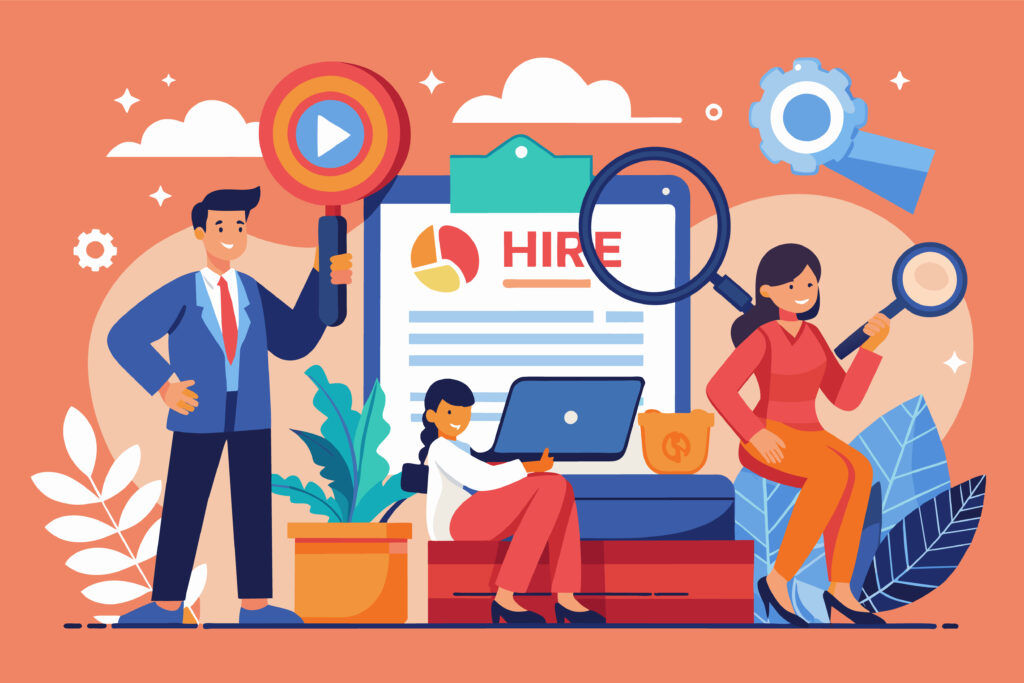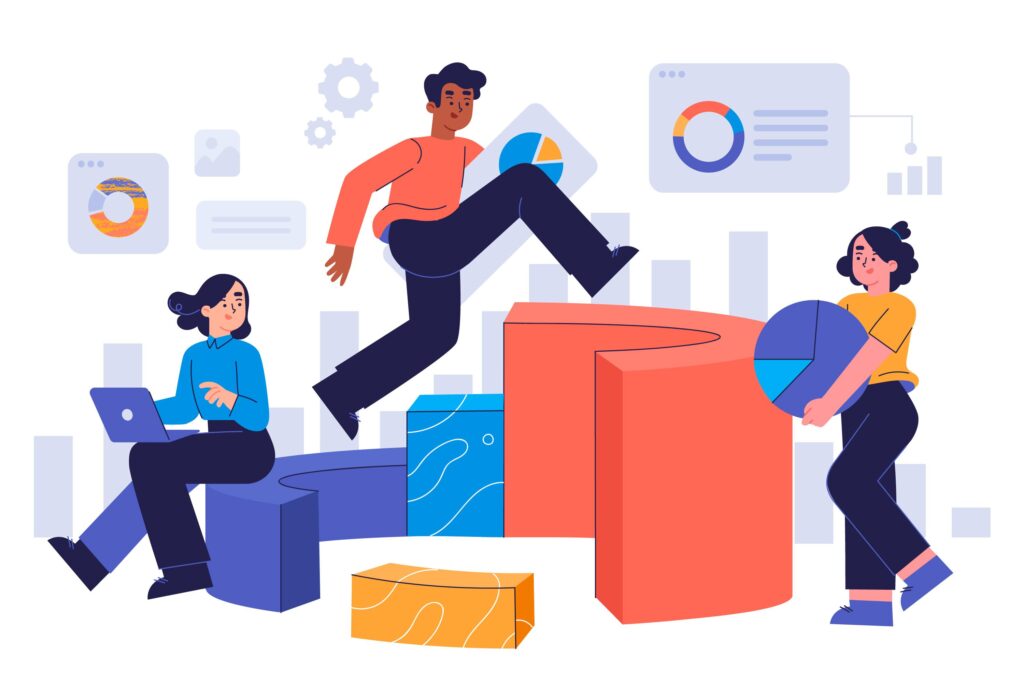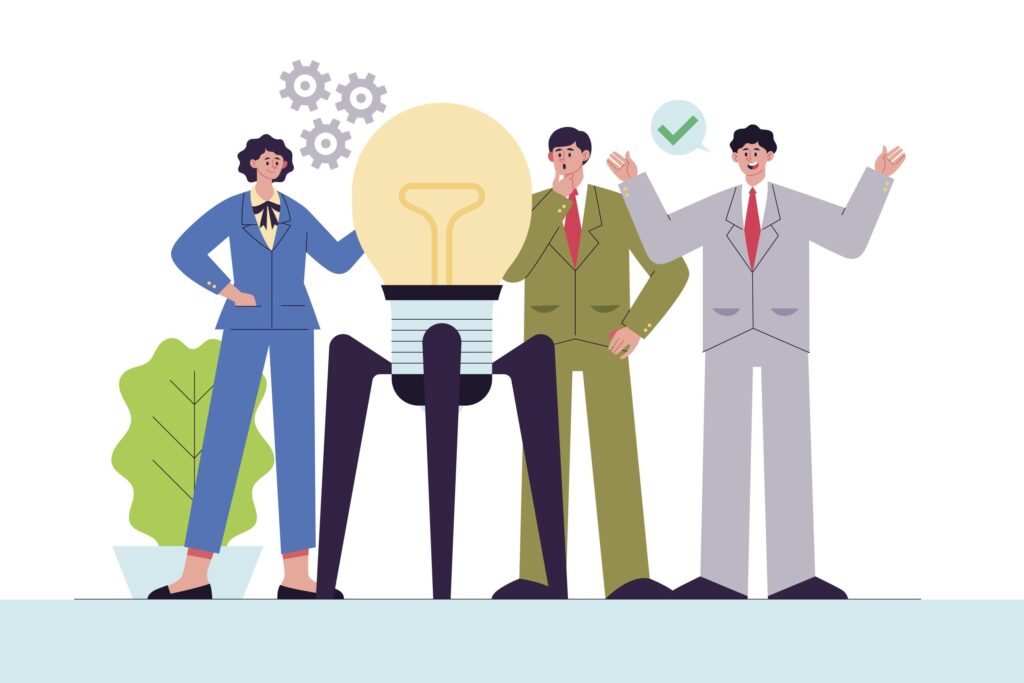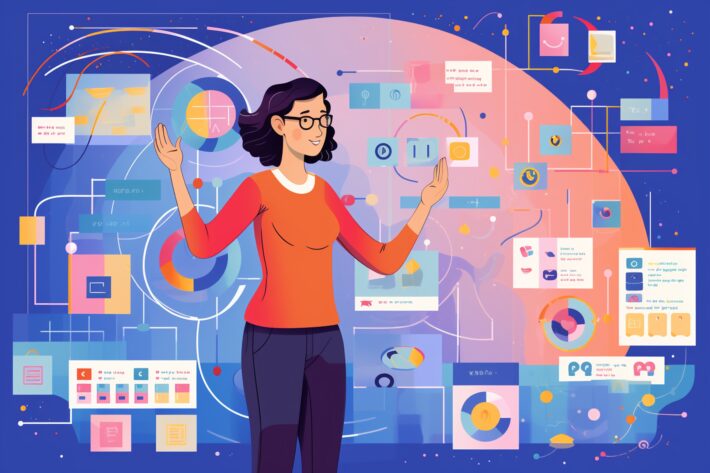Enterprise Architecture for Recruitment and Talent Management

The success of any organization hinges on its ability to secure and cultivate top talent. By integrating enterprise architecture with recruitment and talent management processes, organizations can create a cohesive, scalable, and technology-driven approach to acquiring, developing, and retaining skilled labour. This strategic alignment enhances efficiency and enables companies to swiftly adapt to evolving workforce dynamics and competitive landscapes.
Welcome to the future of Recruitment and Talent Management – architected for excellence!
What is Enterprise Architecture?
Enterprise architecture (EA) is a strategic framework that aligns an organization’s business strategy, processes, information, and technology to achieve its goals. It provides a holistic view of the organization, enabling effective decision-making, optimization of resources, and adaptation to changes in the business environment.
EA acts as a blueprint for how different components of an enterprise work together, ensuring that IT investments support business objectives and that systems across the organization can communicate effectively.
Enterprise Architecture — A Fresh Look at Recruitment and Talent Management
The war for talent is real, and traditional recruitment methods are often proving inadequate. This is where Enterprise Architecture (EA) steps in, offering a fresh perspective on how to attract, develop, and retain top performers. This innovative approach integrates cutting-edge technology with strategic business objectives, creating a more dynamic and efficient talent ecosystem.
At its core, EA in HR focuses on:
- Redefining HR Processes: EA aligns HR processes with business objectives and tech capabilities, transforming traditional methods.
- System Integration: EA ensures seamless integration of HR systems (like ATS and performance tools) with other enterprise applications for efficient workflows and data-driven decisions.
- Data-Driven Talent Acquisition: EA supports robust data architectures for advanced analytics in recruitment, such as predictive modeling, AI-driven resume screening, and data-backed insights.
- Scalability and Flexibility: EA provides the scalability and flexibility needed to adapt HR systems to changing business needs, like growth, mergers, or remote work.
- Enhanced Experience: EA enables seamless interfaces for candidates and employees, improving applicant tracking, onboarding, and self-service HR portals.
- Compliance and Security: EA ensures HR systems are designed with compliance and security (like GDPR) in mind.
- Future-Proofing HR: EA facilitates the integration of emerging technologies like AI, machine learning, and blockchain into talent management.
- Cost Optimization: EA identifies redundancies, leading to cost savings and efficient resource allocation in HR.
- Alignment with Business Strategy: EA ensures recruitment and talent management align with business strategy and goals.
- Change Management: Implementing EA requires careful change management, involving technological shifts, process changes, and cultural adjustments.
This fresh approach to HR through EA promises strategic, efficient, and future-ready operations but requires careful planning and stakeholder buy-in.

What are the key challenges in Recruitment and Talent Management without EA?
Without Enterprise Architecture (EA), organizations face significant challenges in Recruitment and Talent Management, impacting their ability to attract, develop, and retain top talent. Here are the key challenges:
- Lack of Strategic Alignment: HR initiatives may not align with business objectives.
- Isolated Systems and Data: Disconnected HR systems lead to data inconsistencies.
- Process Inefficiencies: Inconsistent and manual recruitment processes.
- Limited Visibility and Analytics: Difficulty in generating comprehensive HR reports and insights.
- Technology Integration Issues: Challenges in integrating and scaling HR technologies.
- Poor User Experience: Fragmented interfaces for candidates, employees, and HR professionals.
- Compliance and Security Risks: Difficulties in maintaining data privacy and consistent policy application.
- Inefficient Resource Allocation: Duplication of efforts and ineffective resource allocation.
- Limited Agility and Adaptability: Slow response to changing business needs.
- Inconsistent Talent Assessment: Lack of standardized criteria for evaluating candidates and employees.
- Ineffective Succession Planning: Inability to systematically identify and develop future leaders.
- Poor Candidate and Employee Experience: Disjointed recruitment and inconsistent onboarding processes.
- Limited Collaboration: Difficulty fostering cross-functional teamwork.
- Scalability Issues: Challenges in adapting HR processes to support growth.
- Missed Opportunities for Innovation: Failure to leverage emerging HR technologies and data-driven strategies.
These challenges highlight the need for an Enterprise Architecture approach in Recruitment and Talent Management to create a more cohesive, efficient, and strategic talent management ecosystem.
Enterprise Architecture Models for HR Processes
Enterprise Architecture (EA) models for HR processes help organizations align their human resources strategies, operations, and technologies with overall business objectives. Here’s a concise overview of key elements in EA models for HR processes:
Business Architecture:
- HR strategy and objectives: Includes long-term workforce planning, talent management strategies, and aligning HR goals with overall business objectives.
- Organizational structure: Defines reporting relationships, job roles, and responsibilities across the organization.
- HR policies and procedures: Encompasses guidelines for employee conduct, work arrangements, leave policies, and other HR-related processes.
Information Architecture:
- Employee data models: Structures for storing and organizing employee information, including personal details, job history, skills, and performance data.
- HR analytics and reporting: Systems and methodologies for analyzing HR data to derive insights on workforce trends, productivity, and other key metrics.
- Knowledge management systems: Platforms for capturing, storing, and sharing organizational knowledge and best practices.
Application Architecture:
- Human Resource Information Systems (HRIS): Central systems for managing employee data, payroll, and core HR functions.
- Applicant Tracking Systems (ATS): Software for managing the recruitment process, from job postings to candidate selection.
- Learning Management Systems (LMS): Platforms for delivering and tracking employee training and development programs.
- Performance Management Systems: Tools for setting goals, conducting performance reviews, and tracking employee progress.
Technology Architecture:
- HR software platforms: Integrated suites of HR applications that cover multiple HR functions.
- Cloud-based HR solutions: SaaS (Software as a Service) offerings that provide scalable, accessible HR tools.
- Integration with other enterprise systems: Connections with ERP, CRM, and other business systems for data sharing and process alignment.
Process Architecture:
- Recruitment and onboarding: Workflows for attracting, selecting, and integrating new employees into the organization.
- Training and development: Processes for identifying skill gaps, designing training programs, and measuring their effectiveness.
- Performance evaluation: Systematic approaches to assessing employee performance, providing feedback, and setting goals.
- Compensation and benefits management: Processes for determining salaries, bonuses, and managing employee benefits programs.
- Employee relations and engagement: Strategies and processes for maintaining positive workplace relationships and fostering employee satisfaction.
Security and Compliance:
- Data privacy and protection: Measures to safeguard sensitive employee information and comply with data protection regulations.
- Regulatory compliance: Ensuring HR practices adhere to labor laws, equal employment opportunity regulations, and other relevant legislation.
- Access control and authentication: Systems for managing user access to HR systems and data based on roles and responsibilities.
Integration and Interoperability:
- APIs and data exchange protocols: Standards and methods for sharing data between different HR systems and with other business applications.
- Single sign-on (SSO) capabilities: Allowing users to access multiple HR applications with a single set of login credentials.
- Integration with finance and other departments: Ensuring seamless data flow and process alignment between HR and other organizational functions.
These components work together to create a comprehensive EA model for HR processes, enabling organizations to effectively manage their human capital while aligning with broader business goals.

Technology Stack for Modern EA Recruitment and Talent Management
This stack will cover various aspects of the recruitment and talent management process, leveraging contemporary technologies and approaches.
1. Core Applicant Tracking System (ATS):
2. Talent Acquisition:
- LinkedIn Recruiter
- GitHub Jobs (for technical roles)
- Stack Overflow Jobs (for technical roles)
- Entelo (AI-powered sourcing)
- SeekOut (AI-powered sourcing and engagement)
- Codility (for technical roles)
3. AI-powered Screening and Assessment:
- HireVue (video interviewing and assessments)
- Pymetrics (gamified assessments)
- Codility (technical assessments)
- HackerRank (technical assessments)
4. Interview Scheduling and Coordination:
- Calendly
- GoodTime.io
- Clara Labs (AI scheduling assistant)
5. Background Checks and Verification:
6. Onboarding:
7. Performance Management and Goal Setting:
8. Talent Analytics and Reporting:
9. Employee Engagement and Surveys:
10. Compensation Management:
11. Integration and Data Management:
12. AI and Machine Learning Tools:
- TensorFlow or PyTorch (for custom ML models)
- Amazon SageMaker (for ML model deployment)
- Google Cloud AI Platform
13. Cloud Infrastructure:
14. Security and Compliance:
15. Collaboration and Communication:
16. Project Management and Workflow:
The exact combination of tools would depend on the specific needs of the organization, its size, budget, and existing technology ecosystem. Integration between these various tools is crucial for creating a seamless workflow and maximizing efficiency.

Integration of HR systems with other Enterprise Applications
The integration of HR systems with other enterprise applications is crucial for creating a cohesive, efficient, and data-driven organization. Here are the key aspects of integrating HR systems with other enterprise applications:
1. Enterprise Resource Planning (ERP) Integration:
- ERP Software synchronize employee data between HR and finance modules
- Automate payroll processes
- Link HR costs to overall business financials
- Examples: SAP SuccessFactors integration with SAP ERP, Oracle HCM with Oracle ERP Cloud
2. Customer Relationship Management (CRM) Integration:
- CRM Software share employee information for account management
- Align sales team structure with HR org charts
- Integrate HR data for sales performance analysis
- Examples: Salesforce integration with Workday, Microsoft Dynamics 365 with ADP
3. Project Management Tools:
- Project Management Tools sync employee profiles and skills
- Automate resource allocation based on HR data
- Track time and attendance for project costing
- Examples: Jira integration with BambooHR, Microsoft Project with Oracle HCM
4. Learning Management Systems (LMS):
- Automatically update employee training records
- Align skill development with performance management
- Track compliance training requirements
- Examples: Cornerstone OnDemand integration with SAP SuccessFactors, Moodle with Workday
5. IT Service Management (ITSM):
- Automate employee onboarding/offboarding tickets
- Manage access rights based on HR role information
- Sync organizational changes with IT asset management
- Examples: ServiceNow integration with Workday, BMC Remedy with Oracle HCM
6. Business Intelligence (BI) and Analytics:
- BI Tools combine HR data with other business data for comprehensive analytics
- Create dashboards that incorporate HR metrics with business KPIs
- Examples: Tableau integration with ADP, Power BI with SAP SuccessFactors
7. Time and Attendance Systems:
- Sync employee schedules with HR records
- Automate leave management and overtime calculations
- Examples: Kronos integration with Workday, ADP Time & Attendance with SAP SuccessFactors
8. Expense Management:
- Link employee profiles for expense reporting
- Automate approval workflows based on HR hierarchies
- Examples: Concur integration with Oracle HCM, Expensify with BambooHR
9. Communication and Collaboration Tools:
- Collaboration Tools sync employee directories and org charts
- Automate access provisioning based on HR data
- Examples: Microsoft Teams integration with ADP, Slack with Workday
10. Identity and Access Management (IAM):
- Automate user provisioning/deprovisioning based on HR events
- Manage access rights across applications using HR role data
- Examples: Okta integration with Workday, Azure AD with SAP SuccessFactors
Discover the Best HR Software Solutions for Modern Human Resources Teams
Integration Methods:
- APIs (Application Programming Interfaces):
- RESTful APIs for real-time data exchange
- GraphQL for flexible, efficient data queries
- ETL (Extract, Transform, Load) processes:
- For batch data synchronization between systems
- Middleware and Integration Platforms:
- MuleSoft, Dell Boomi, or Workato for complex integrations
- Webhooks:
- For event-driven integrations and real-time updates
- Single Sign-On (SSO):
- For seamless user authentication across systems
Challenges and Considerations:
- Data Privacy and Security:
- Ensure compliance with regulations like GDPR, CCPA
- Implement proper data encryption and access controls
- Data Quality and Consistency:
- Establish data governance practices
- Implement data validation and cleansing processes
- Change Management:
- Train employees on integrated systems
- Manage process changes resulting from integration
- Scalability:
- Design integrations to handle growth in data volume and complexity
- Maintenance and Updates:
- Plan for ongoing maintenance and updates to integrated systems
Integrating HR systems with other enterprise applications enhances operational efficiency, data accuracy, and decision-making across business functions, crucial for agile and data-driven organizational transformations.
StaQ CoPilot: Your partner for cutting-edge HR software and expert consultation!
Don’t waste time and resources navigating the crowded HR tech market alone. Let StaQ CoPilot be your guide to building a robust, future-ready enterprise architecture for recruitment and talent management. Here’s how StaQ Copilot streamlines the process:
- Expert Insights: Curated shortlist based on industry knowledge
- Tailored Recommendations: Personalized suggestions for your needs
- Clear Comparisons: Easy-to-understand feature breakdowns
- Time-Saving: Efficient process eliminates extensive research
Visit StaQ CoPilot today and find the perfect fit for your business!



